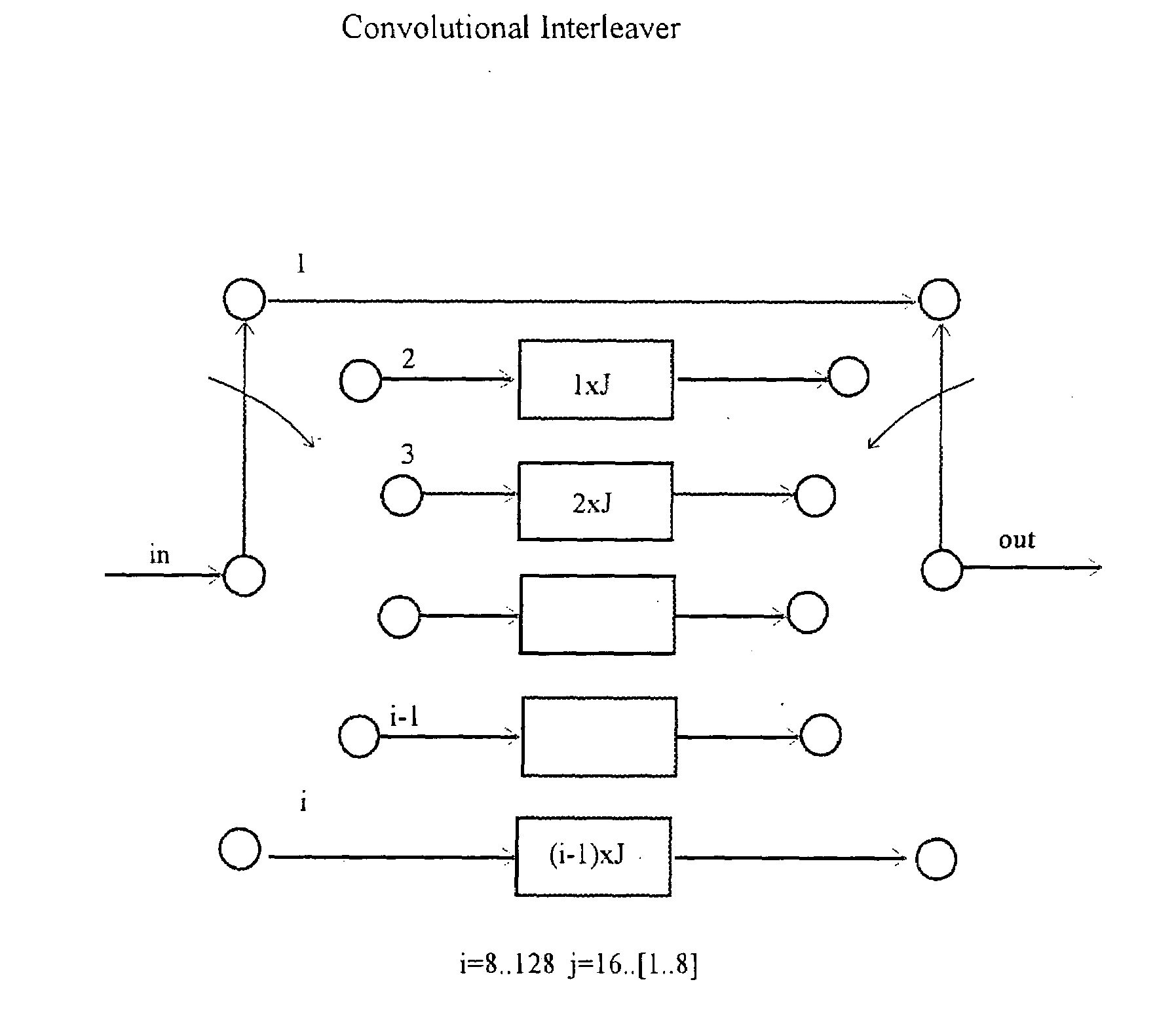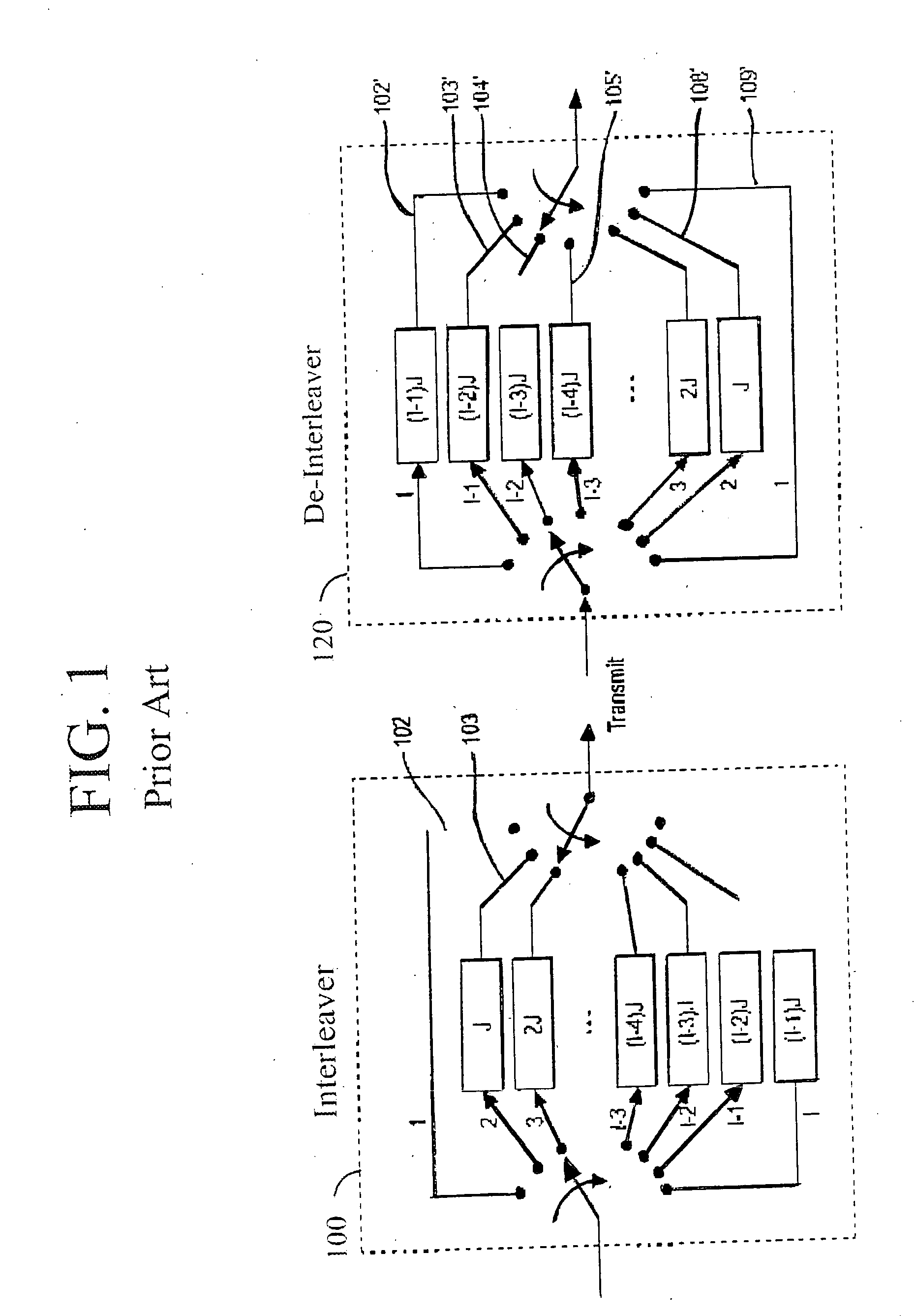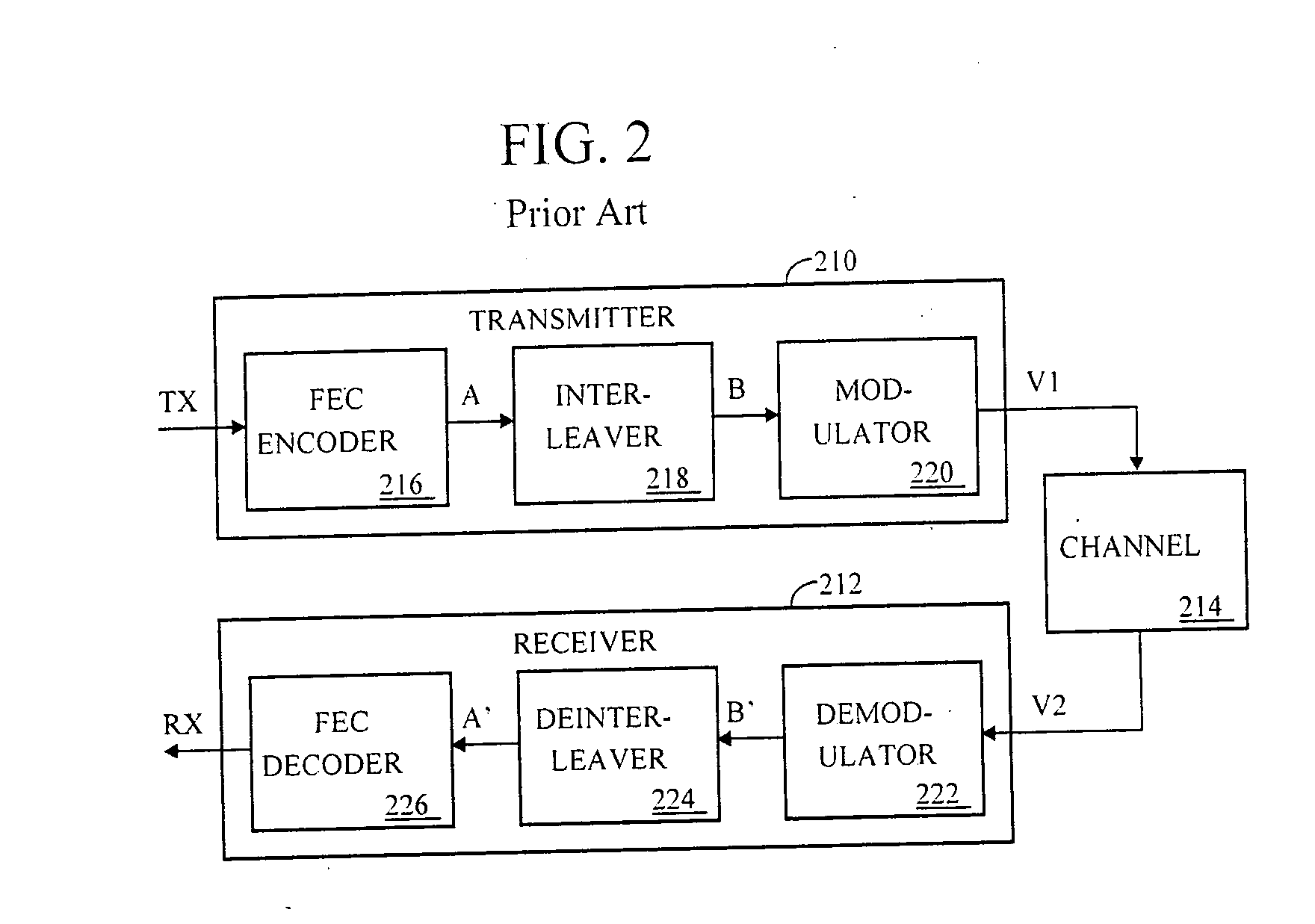SDRAM convolutional interleaver with two paths
a convolutional interleaver and ram technology, applied in the field of data communication, can solve the problems of non-volatile memory either costing more or worse, and any thing contained in ram is lost,
- Summary
- Abstract
- Description
- Claims
- Application Information
AI Technical Summary
Benefits of technology
Problems solved by technology
Method used
Image
Examples
Embodiment Construction
[0147]According to the invention, generally, a two (2) path interleaver is set up with multiple channels, and each channel can go through a short path or a long path and perform at high speed due to the channel sorting in SRAM. Further, staggered writes to the SRAM allows the SRAM to be small, which is beneficial when implemented in FPGA. Additionally, the writes are packed to support many interleaver modes with the small SRAM. The techniques disclosed herein support having two interleaver lengths without resulting in a tremendous slowdown and dual SDRAM.
[0148]The present invention makes it possible to implement a SDRAM Convolutional Interleaver with two paths (A and B) by using SDRAM, FPGA logic and FPGA SRAM.
[0149]A problem being addressed by the present invention is that Burst writes to a SDRAM two path interleaver would max out at (be limited to) a throughput of 10 M Symbols / sec, and a higher symbol rate (such as 110 M Symbols / sec) is desired.
[0150]According to the invention, th...
PUM
 Login to View More
Login to View More Abstract
Description
Claims
Application Information
 Login to View More
Login to View More - R&D
- Intellectual Property
- Life Sciences
- Materials
- Tech Scout
- Unparalleled Data Quality
- Higher Quality Content
- 60% Fewer Hallucinations
Browse by: Latest US Patents, China's latest patents, Technical Efficacy Thesaurus, Application Domain, Technology Topic, Popular Technical Reports.
© 2025 PatSnap. All rights reserved.Legal|Privacy policy|Modern Slavery Act Transparency Statement|Sitemap|About US| Contact US: help@patsnap.com



